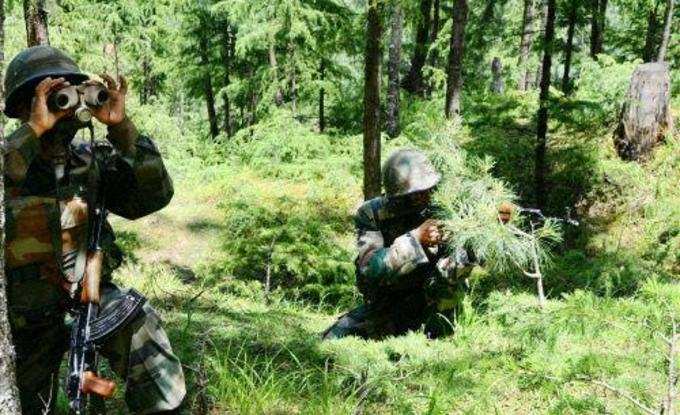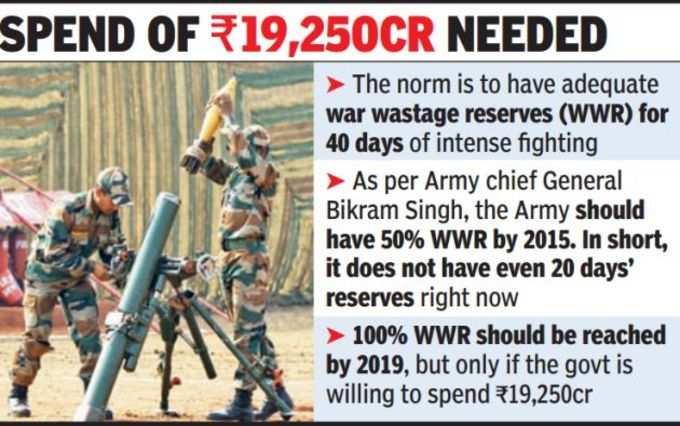 NEW DELHI: The world’s second-largest standing
NEW DELHI: The world’s second-largest standing The norm is that war wastage reserves (WWR) should be adequate for 40 days of intense fighting, with 21 days earmarked for ammunition with shorter shelf-life. But according to a recent statement by Army chief General
In other words, the Army is at not even 50 per cent WWR right now, which means it does not have adequate reserves to fight a war for even 20 days. It is expected to reach 100 per cent WWR only by 2019.
With the huge shortages adversely impacting both operational readiness and training, the 1.18-million strong

This becomes all the more crucial since the Army has kick-started the raising of the new XVII
The Army already has 13 corps, which includes the three "strike" ones headquartered at Mathura (I Corps), Ambala (II Corps) and Bhopal (XXI Corps). They add up to 382 infantry battalions, 281 artillery, 63 armoured, 44 mechanized and 56 air defence regiments, apart from other support arms like signals, engineers, ordnance and the like.
Plans didn't take off
On one hand, almost none of its critical modernization projects for new howitzers, helicopters, anti-tank guided missiles (ATGMs) or air defence guns have materialized till now. On the other, operational hollowness or "critical" deficiencies in ammunition and fuses for existing weapon systems have built up over the last decade.
"There is a glaring mismatch between operational and training requirements vis-a-vis budget allocations, imports and the inadequate production capacity of our 39 ordnance factories," said a senior officer.
The Army holds ammunition, which is costly and also has shelf-life, at three levels. The "first line" of operational and training ammunition is held at the battalion level in the shape of "on weapon and unit reserves", while the "second line" is with higher formations like brigades and divisions.
Finally, there is the WWR, held in a dispersed manner.
With
